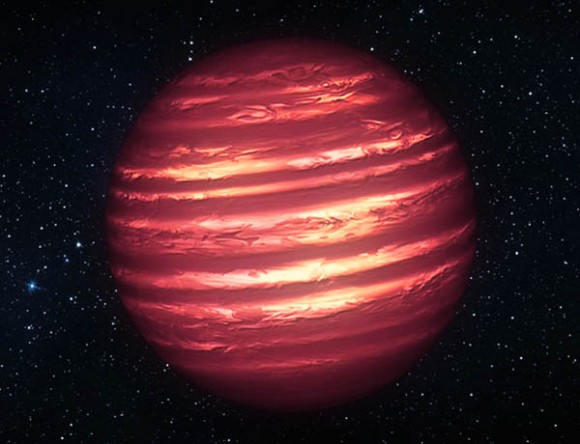Clouds of Sand and Iron Swirl in a Failed Starís Extreme Atmosphere

Artist’s concept of brown dwarf 2MASSJ22282889-431026 (NASA/JPL-Caltech)
The complex weather patterns within the atmosphere of a rapidly-rotating brown dwarf have been mapped in the highest detail ever by researchers using the infrared abilities of NASA’s Spitzer and Hubble space telescopes… talk about solar wind!
Sometimes referred to as failed stars, brown dwarfs form from condensing gas and dust like regular stars but never manage to gather enough mass to ignite full-on hydrogen fusion in their cores. As a result they more resemble enormous Jupiter-like planets, radiating low levels of heat while possessing bands of wind-driven eddies in their upper atmospheric layers.
Although brown dwarfs are by their nature very dim, and thus difficult to observe in visible wavelengths of light, their heat can be detected by Hubble and the Spitzer Space Telescope — both of which can “see” just fine in near- and far-infrared, respectively.
Led by researchers from the University of Arizona, a team of astronomers used these orbiting observatories on July 7, 2011 to measure the light curves from a brown dwarf named 2MASSJ22282889-431026 (2M2228 for short.) What they found was that while 2M2228 exhibited periodic brightening in both near- and far-infrared over the course of its speedy 1.43-hour rotation, the amount and rate of brightening varied between the different wavelengths detected by the two telescopes.
Read more:
http://www.universetoday.com/99342/clouds-of-sand-and-iron-swirl-in-a-failed-stars-extreme-atmosphere/
